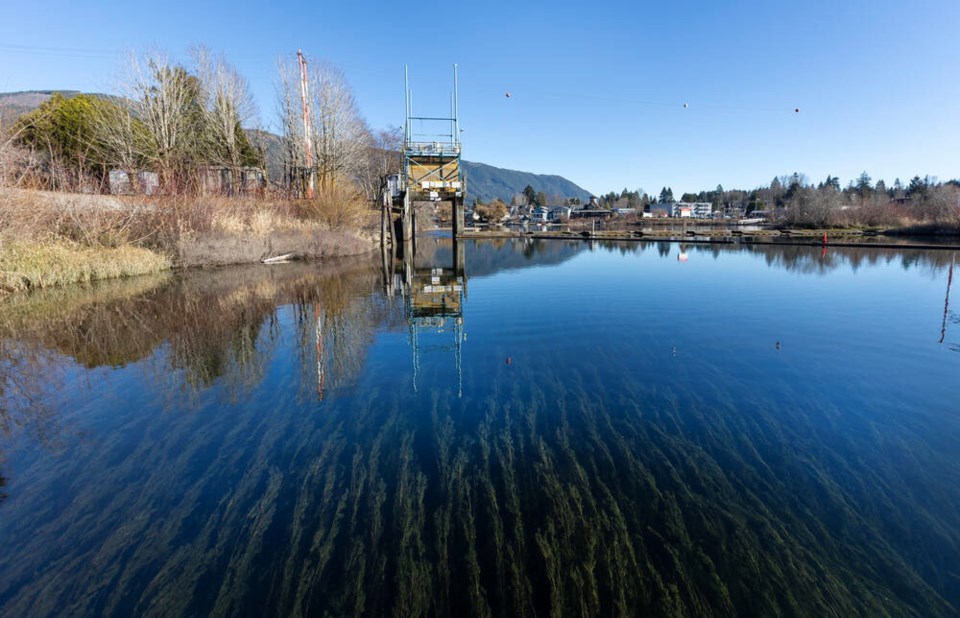The Cowichan Watershed Board says river conditions are similar to those in 2023, when tens of thousands of fish died after prolonged drought and heat.

Warm temperatures, low river flows and declining water quality are sparking fears of another mass fish die-off in the Cowichan River this summer.
The Cowichan Watershed Board issued a statement Monday saying river conditions this summer “mirror” those of 2023, when an estimated 84,000 to 100,000-plus fish died after prolonged drought and heat.
Samples recently collected from six points along the Cowichan River show the water is seeing significant daily fluctuations in pH and dissolved oxygen levels similar to those of 2023, said the board, which is made up of three levels of government as well as the Cowichan Tribes.
Tom Rutherford, Cowichan Watershed Board’s director of strategic priorities, said the most recent data show a slight upturn in conditions, but there is still a way to go before the river is at healthy levels.
“This is what climate change looks like for us — warmer water [and] less of it,” he said in an interview.
Salmon start to feel stress in waters above 16 C, undergo behaviour and physical changes at 20 C, and begin dying at 25 C, he said.
While June saw some cool weather, “which was super-helpful,” now it’s just “rocketing hot,” said Rutherford, adding the peak temperature in the river at Skutz Falls was over 24 C on Sunday.
As warming temperatures cause more algae to grow in the river, increased algae die-off could trigger water chemistry changes that could literally turn the water toxic with ammonia, Rutherford said.
Water flows are also below ideal levels at 5.5 cubic metres per second, but still higher than the 4.5 cubic metres per second in the summer of 2023, he said.
Rutherford said he’s concerned for the other Island rivers where the same issues are taking place but that see less monitoring than the Cowichan River. “These conditions are playing out in other rivers, and no one’s going to be aware of it until everything dies.”
The board has taken several emergency measures in conjunction with federal and provincial governments to protect aquatic life in the Cowichan River, including closing the river to recreational fishing on July 4, 11 days earlier than the usual summer closure date.
Wastewater being pumped into the river from the town of Lake Cowichan has been reduced to half the usual volume, with releases happening overnight to try and limit algae growth.
Weir flows were reduced this spring so more water could be maintained in the summer. Researchers are also looking to identify, protect and improve cold-water refuge areas along the river that could provide fish a respite from the heat when waters warm.
“While every available action is being utilized, without rain or cooler temperatures, it may not be enough,” the board said in a statement.
Cowichan Tribes Chief Sulsulxumaat Cindy Daniels said her nation’s lands and natural resources department had advocated for closing the fishery early.
“We take our guardianship responsibilities seriously to protect the river, the fish and other species that depend on it,” she said in a statement.
Cowichan Valley Regional District chair Kate Segall said the district supports raising the Cowichan Lake weir to help increase climate-change resilience in the region.
There is a proposal to raise the aging weir where the Cowichan River meets Cowichan Lake by another 70 centimetres from its current 97-centimetre height, so more water can be stored during the dry summer months.
Built in the 1950s to provide water for the pulp mill at Crofton, the Cowichan weir is owned and operated by Domtar, formerly known as Paper Excellence, Canada’s largest forestry company.
The weir-replacement project has received $42 million in funding from various governments to date.
But Rutherford said the project is currently going through an environmental impact assessment and will take years to complete. “In the interim, we’ll really need to pick up our game.”
Minister of Water, Land and Resource Stewardship Randene Neill announced in a news conference Monday that residents in the Koksilah and Tsolum watersheds are among those receiving drought-preparation flyers encouraging people to save water and to protect local fish.
“Early action can delay or even avoid the need for stricter regulatory measures,” Neill said.
TheB.C. Drought Information Portalshows streamflow conditions in the Chemanius and Koksilah rivers that could cause significant or irreversible harm to aquatic life, as well as “sub-lethal” water temperatures that could stunt growth and delay migration.
Tsolum River, which joins Puntledge River to form Courtenay River, is another Island river facing sustained drought conditions.
[email protected]